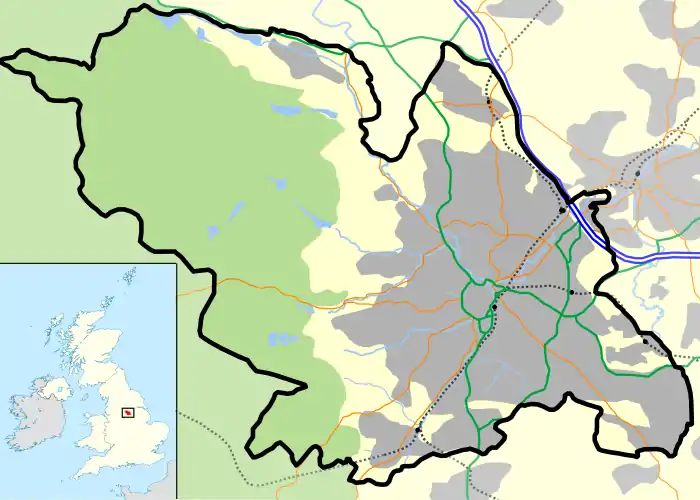Wincobank (hill fort)
Wincobank (grid reference SK377910) is an Iron Age hill fort in the district of Sheffield, England of the same name. The fort stands on the summit of a steep hill above the River Don, it is oval in shape and covers about 10,000 square metres (108,000 ft²), surrounded by a ditch that was originally 1.5–2 m deep and a bank consisting of a rubble core with stone facings held together with timbers. The bank is vitrified, indicating that it was subjected to intense heat at some time in the past—whether this was done purposely by the builders or through accident or attack is unknown. Material taken from a drainage ditch dug through the north east rampart of the fort in 1979 was radiocarbon dated to c. 500 BC.[1]


Early historians thought the fort to be Roman in origin. It is now thought to have been constructed by the Celtic Brigantes tribe, however. Some historians suggest that this fort was part of a 1st-century defensive line built by the Brigantes attempting to halt the northward advance of the Roman legions. This defensive line is suggested to have included hill forts at Carl Wark and Scholes Coppice, and an ancient dyke called Roman Rig that runs from the fort northeast to Mexborough.
The hill was first recorded in 1442 as Wincowe and appears to be derived from Wineca, an Anglo-Saxon personal name and the Old Norse word haugr meaning a mound or hill and so meaning Wineca’s hill.
References
- Historic England. "Wincobank Camp (314855)". PastScape. Retrieved 2 March 2008.
Other sources
- Brigantes Nation (2002). Wincobank—Sheffield. (Accessed 17 December 2005.)
- Hunter, Joseph (1819). An inquiry into the early state and remote history of the Parish of Sheffield. In: Hallamshire. The History and Topography of the Parish of Sheffield in the County of York. pp15–23. London: Lackington, Hughes, Harding, Mayor & Jones.